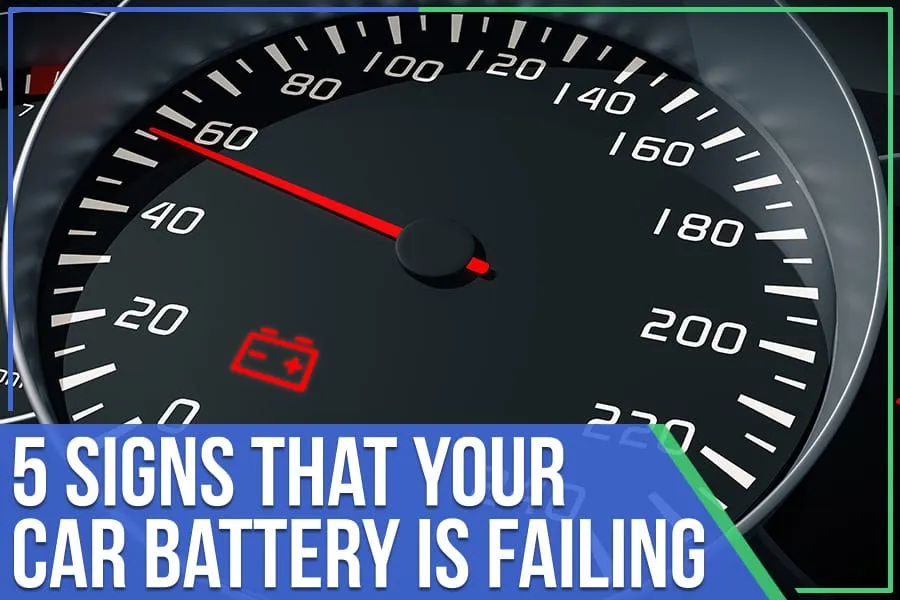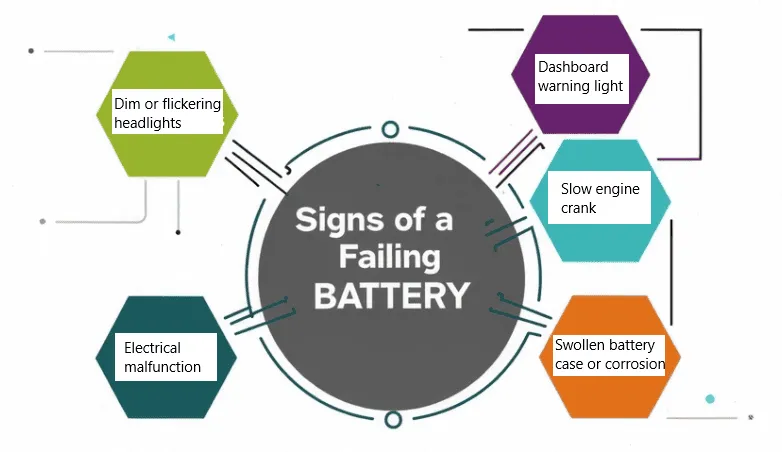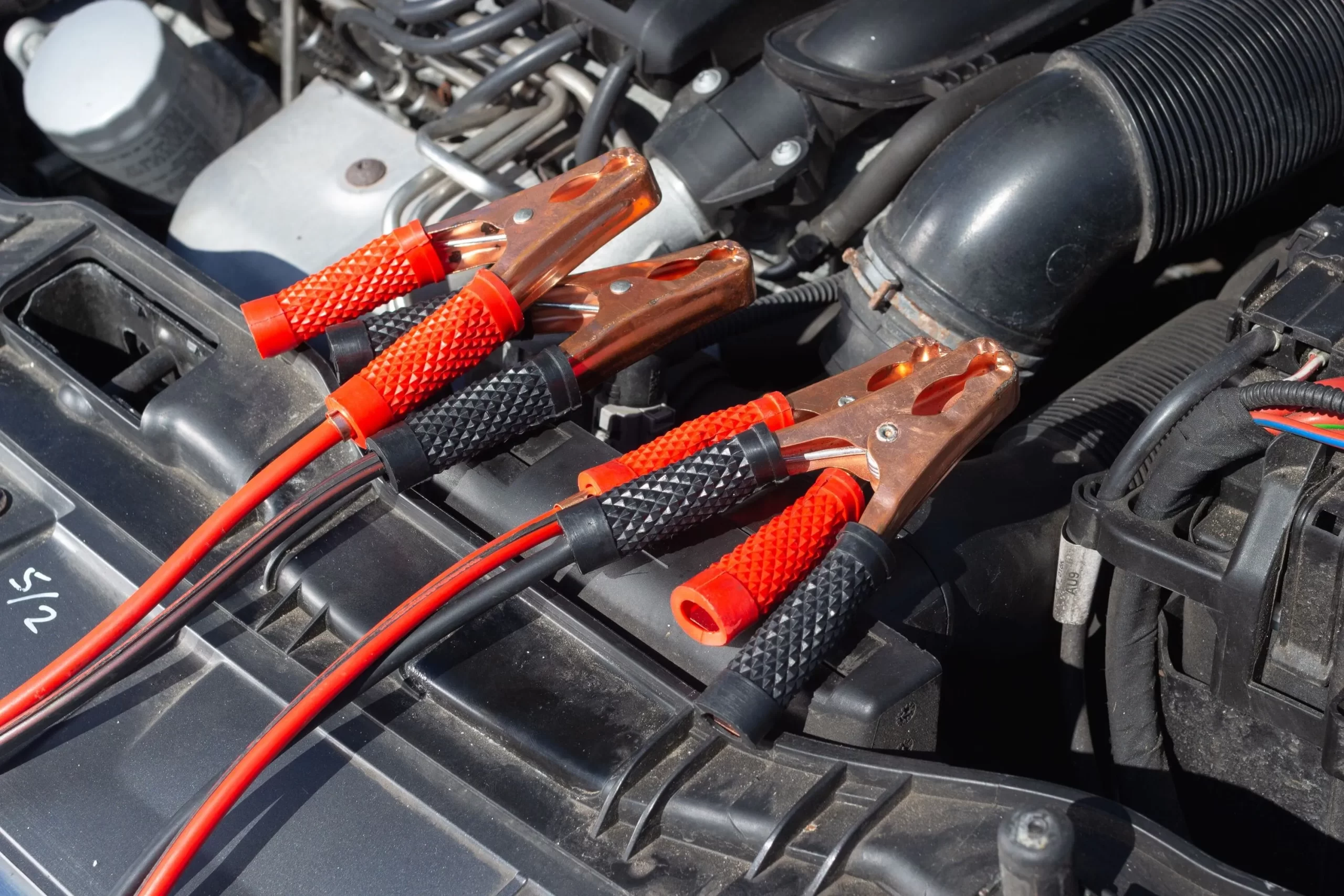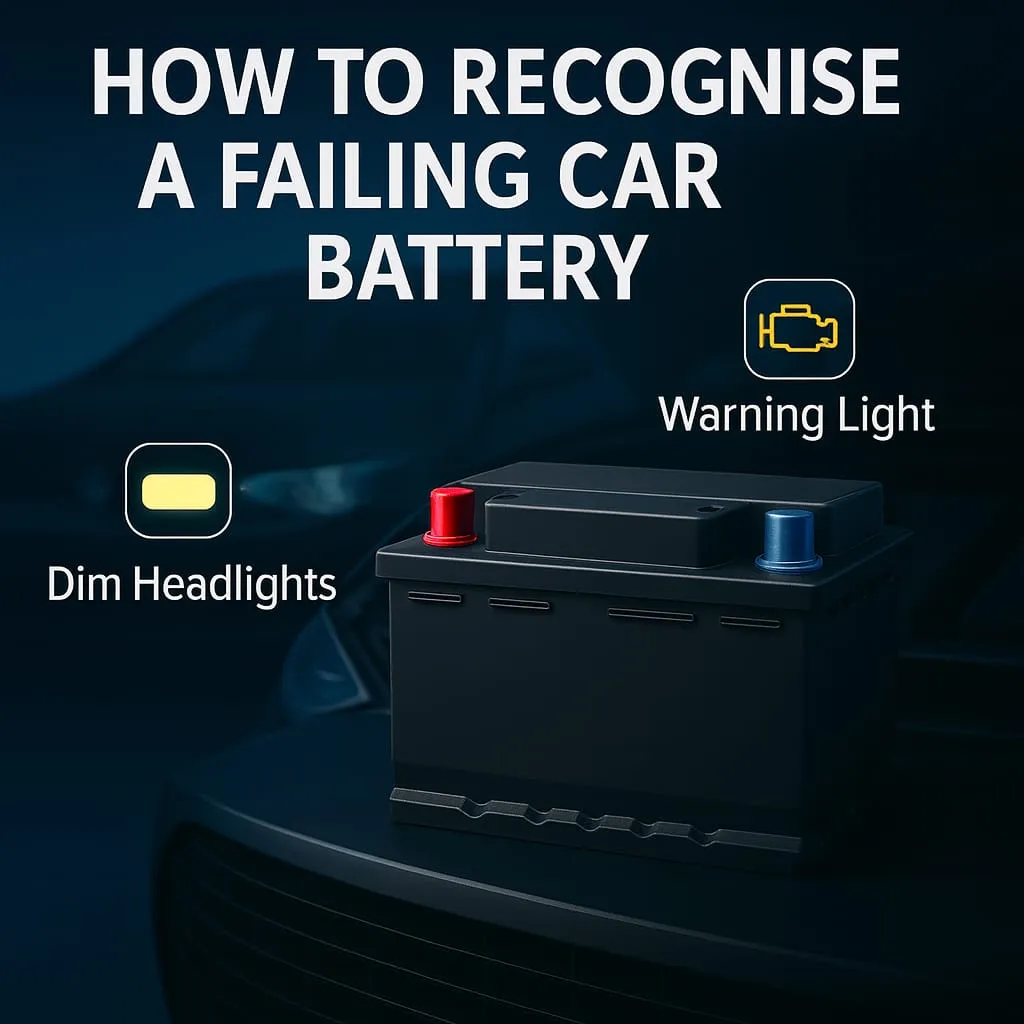
Your vehicle’s battery is the heart of its electrical system, providing the power needed to start the engine, illuminate lights, and run accessories. Whether you drive a petrol, diesel, hybrid, or electric vehicle (EV), recognising early signs of battery trouble is essential to avoid inconvenient breakdowns and expensive repairs.
Lead–acid starter batteries typically last three to five years, but factors such as temperature extremes, driving habits, and maintenance can significantly influence lifespan. In electric vehicles, lithium-ion batteries can last much longer but also require careful handling. This guide explains the signs of battery failure, the underlying causes, how to test them, and practical tips to extend service life — all based on established automotive standards such as SAE J537, IEC 60095-1, and EN 50342-1.
1. Signs of a Failing Car Battery

Identifying early warning signs allows you to take action before complete failure:
- Slow Engine Cranking: A weak or sluggish crank when starting the engine indicates insufficient power.
- Dashboard Warning Lights: A battery or “Check Engine” indicator may point to charging or battery health issues.
- Dim or Flickering Headlights: If lights dim when using multiple accessories, it can signal reduced battery voltage.
- Electrical Malfunctions: Slow power windows, unresponsive locks, or erratic interior lights suggest low battery output.
- Physical Damage: A swollen battery case may result from overheating, while corrosion on terminals reduces conductivity.
2. Causes of Battery Failure
Common causes of premature battery failure include:
- Age: After three years, most lead–acid batteries begin to lose capacity and require more frequent testing.
- Extreme Temperatures:
- Heat accelerates electrolyte evaporation and grid corrosion.
- Cold reduces chemical reaction rates, cutting cranking power by 30–50% at −18 °C.
- Parasitic Loads: Accessories such as alarms or GPS draw small amounts of power when the vehicle is off.
- High Power Usage: Running lights, infotainment, or chargers without the engine on drains stored energy.
3. Testing Your Battery
Regular testing can reveal early problems before a failure occurs:
- Voltage Check (Open-Circuit):
- 12.6 V → ~100 % State of Charge (SOC)
- 12.4 V → ~75 % SOC
- 12.2 V → ~50 % SOC
- Below 12.0 V → risk of sulphation in lead–acid batteries
- Load Testing: Performed with specialised equipment to measure performance under starting load, following SAE J537 or EN 50342-1 procedures.
- For EVs: Use the vehicle’s onboard diagnostics or a specialist tool to assess battery State of Health (SoH).
4. Battery vs. Starter Motor Issues
Differentiating between a weak battery and a faulty starter saves time and money:
- Failing Battery: Slow cranking, dim lights, starts after a jumpstart.
- Bad Starter Motor: Clicking noise or no crank even after a jumpstart.

5. Electric Vehicle Battery Considerations
Most modern EVs use lithium-ion batteries, which have different characteristics from lead–acid types:
- Signs of Degradation:
- Reduced driving range per charge
- Slower charging speeds
- Dashboard alerts related to battery health
- Care Tips:
- Avoid frequent rapid charging to limit heat-related wear
- Park in shaded or temperature-controlled areas
- Maintain recommended charge levels (often 20–80% for daily use)
6. Maintenance Tips to Extend Battery Life
Follow these practices for longer battery service life:
- Keep Terminals Clean: Neutralise corrosion with a baking soda–water mix.
- Test Every 6 Months: Use a multimeter or get a professional diagnostic check.
- Avoid Short Trips: Combine errands to allow the alternator to fully recharge the battery.
- Turn Off Accessories: Ensure lights and devices are switched off before shutting down the engine.
- Protect from Extremes: Park in shaded or insulated spaces to minimise thermal stress.
- Check the Charging System: A faulty alternator can damage a good battery.
FAQs
Conclusion
By recognising the warning signs of a failing battery, following proper testing methods, and applying preventive maintenance, you can avoid inconvenient breakdowns and maximise battery life. Lead–acid and lithium-ion batteries have different care needs, but both benefit from climate-conscious storage, regular testing, and proper charging practices. Following international standards such as SAE J537, IEC 60095-1, and EN 50342-1 ensures that testing and maintenance are accurate and reliable.
References
- Denton, T. (2016). Advanced Automotive Fault Diagnosis (4th ed.). Routledge. ISBN: 9780415725767
- Dhameja, S. (2001). Electric Vehicle Battery Systems (1st ed.). Newnes. eBook ISBN: 9780080488769
- SAE International. (2023). SAE J537:2023 – Storage Batteries. SAE International. https://www.sae.org/standards/content/j537_202309/
- IEC 60095-1:2021 – Lead-acid starter batteries – Part 1: General requirements and methods of test.
- EN 50342-1:2015+A1:2018 – Lead-acid starter batteries – Part 1: General requirements and methods of test

